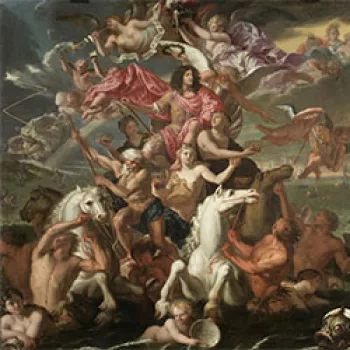Alms dish 1660-61
Silver gilt | 8.0 x 94.8 cm (whole object) | RCIN 92012
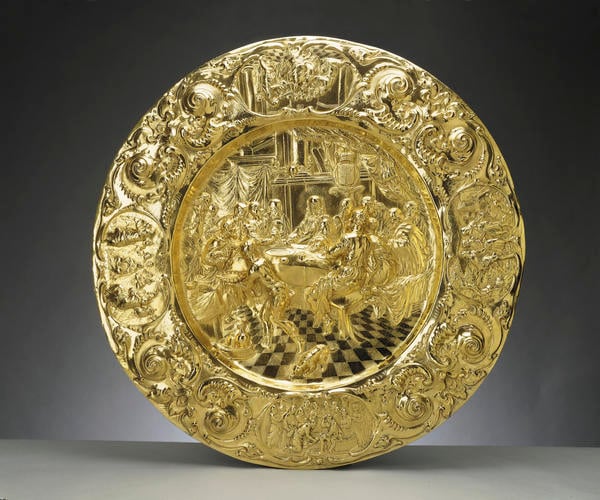
Attributed to Henry Greenway (free 1648)
Alms dish 1660-61

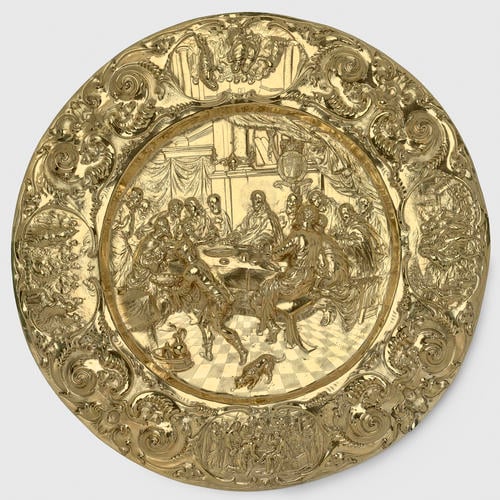

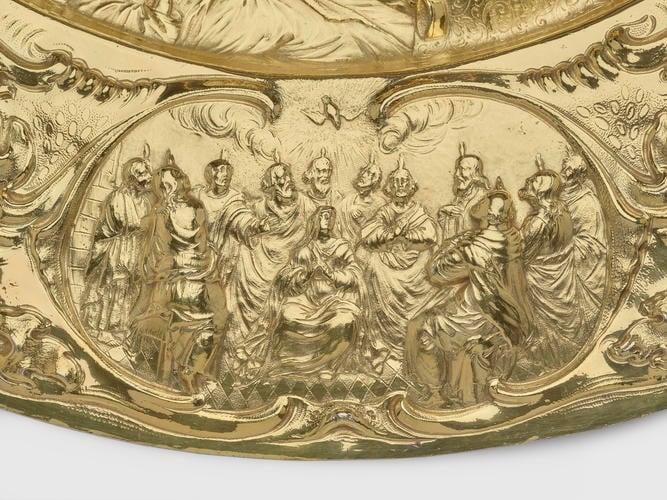

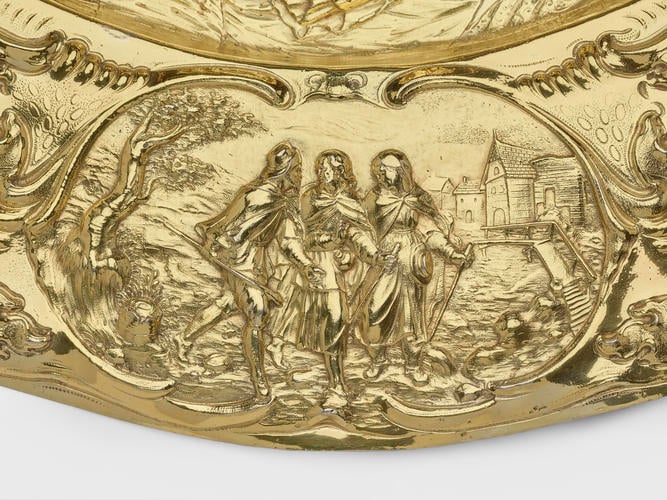
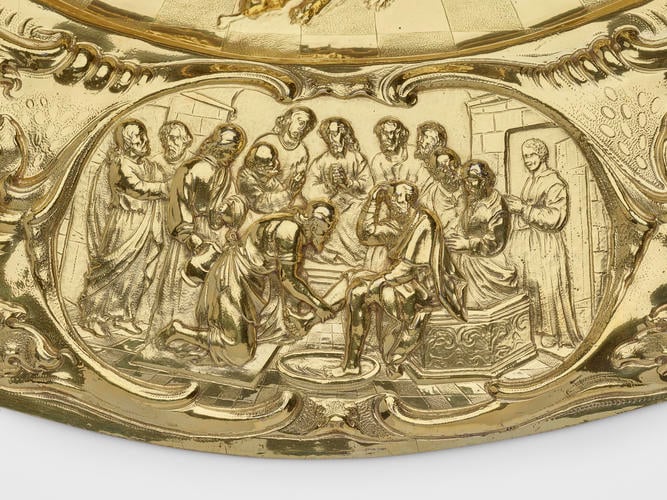
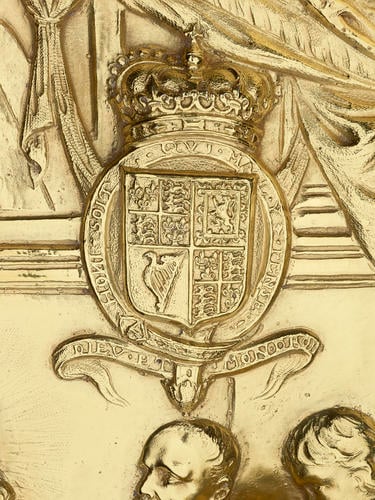
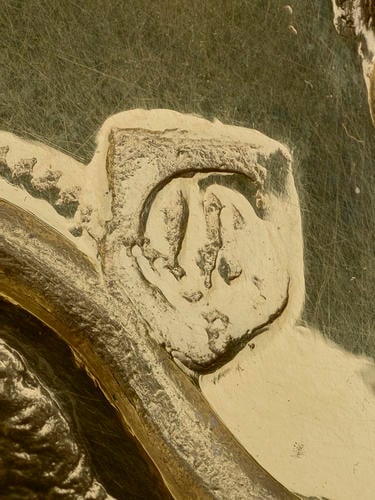

-
A silver-gilt alms dish, the centre deeply embossed with a scene of The Last Supper and the royal Stuart arms (1603-89) prominently displayed to the right of Christ’s head; the broad rim with auricular scrollwork and oval reserves containing scenes of The Washing of the Apostles' Feet, The Road to Emmaus, Christ's Commission to the Apostles and The Coming of the Holy Ghost.
This magnificent dish, one of the largest of its type in existence, first adorned the high altar of Westminster Abbey for Charles II's coronation ceremony in 1661. It was almost certainly used at later coronations, including that of King Charles III in 2023, and since the early-eighteenth century, it has formed part of the altar plate of the Chapel Royal, St James's Palace. There it witnessed the marriages of George III, George IV, Queen Victoria and George V. It is still in regular use for major religious events in the Chapel Royal.
The Washing of the Apostles' Feet is drawn from a woodcut of 1574 by Jan Wierix and The Road to Emmaus from a woodcut by A. Wierix after Martin de Vos.
The selling off of the chapel plate of Charles I took place throughout the Civil War, largely by the Royalists, but culminated in 1649 with a symbolic melt of the crown jewels and regalia by the Parliamentarians, finally doing away with all 'toys' associated with the Crown.
In 1660, therefore, there was a certain urgency to replenish the royal Jewel House with practical items of plate as well as items required for the coronation of the king. In the first year of his reign, Charles commissioned 73,000 troy ounces of plate, amounting to £30,000-worth of silver, in order to stock the royal chapels, the dining table and to provide lighting for the royal residences. The resulting chapel plate, much of it used at Westminster Abbey to create the dazzling display on the altar at the time of the coronation, was of the highest baroque form, incorporating auricular decoration and virtuoso chasing of Biblical scenes.
At the heart of the new chapel plate lay the great altar dishes, some of the largest to have been created and wrought in heavy-gauge silver. They appear to have been gilded from the first (unlike much of the dining plate of the period, which was only gilded in the early nineteenth century). The symbolism of these dishes, showing scenes of the Last Supper, Christ washing the feet of the disciples, the blessing of the children and other similar scenes, placed Christian charity at the heart of the service and replaced the traditional altar cross with dishes, in a firmly Protestant message.
For a short period, the Stuart symbol of a 'rose slipped in the stalk', a heraldic device showing a rose sprouting two or four leaves, appeared on the plate associated with Charles II's initial commission in 1660. This symbol seems almost exclusively to have been used on the plate associated with the coronation and was not repeated elsewhere. The ciphers and arms on the plate were reworked for the coronations of both William and Mary and Queen Anne.
The plate provided for the Abbey was not mentioned by Walker in his account of preparations for the coronation of the king – these pieces were working plate, albeit for high days and holidays. Similar series of large altar dishes with accompanying chalices, patens, altar flagons and candlesticks were commissioned at the same time for the Chapel Royal at St James's Palace and for St George's Chapel in Windsor, many of the works bearing similar makers' marks.
Text adapted from Charles II: Art and Power (2017)Provenance
Made for the Coronation of Charles II, 23 April 1661. Displayed in Westminster Abbey at the Coronation service of King Charles III, 6 May 2023
-
Creator(s)
Acquirer(s)
-
Medium and techniques
Silver gilt
Measurements
8.0 x 94.8 cm (whole object)
Category




